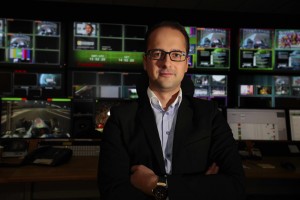Remotely Rio: MTG plans split operation for Olympics coverage

MTG CTO Bartek Gudowski: “This is an interesting challenge and opens up a whole new perspective on production”
With the increasing use of IP technology for remote production, it was inevitable that broadcasters would look at this option when it comes to coverage of the Olympic Games in Rio. One such broadcaster is Scandinavia-based Modern Times Group (MTG).
“This will be the first remote production project we have undertaken,” reveals MTG’s CTO Bartek Gudowski. “And with that in mind, you will not be surprised to learn that we carried out extensive research within our own company and talked to several other experienced broadcasters to get input on how to achieve the very best – and most reliable — results.”
Once all this background help had been assimilated, MTG began an in-depth testing process to recognise potential problems and evaluate solutions. “We built a replica of our Brazilian studio, control room and CAR within our facility in Stockholm. This allowed us to examine the whole set-up well in advance.
“Two areas that especially occupied our attention were time delays and talkback. However, our testing procedure enabled us to devise solutions that overcame the difficulties. When we were satisfied that everything was in place and worked as it was supposed to, we packed it up and sent it to Rio.”
Gudowski says that remote production will mean there are significant savings to be made in travel and accommodation costs. “In all, just over 100 MTG personnel will be in Rio, made up of ENG teams, programme hosts, editors, technical operators, logistical personnel and security. The main production staff – directors, vision mixers, production assistants and so on — will be based in Stockholm for the duration of the Games.”
While the Stockholm gallery will be equipped with a Snell Kahuna vision switcher, MTG will be using Grass Valley cameras in its Olympics studio. “We will be deploying three or four cameras in the studio, and the output from these, plus audio and the 4-wire connections will be fed back to Sweden by fibre. In principle, this will be a single fibre, but we are setting up multiple fibres in parallel to carry the different services, such as J2K compressed video, MADI, and Ethernet, but also to run these as protected services.
“In other words, we will utilise these diverse fibre paths for redundancy. Apart from these protected services, we have several disaster recovery programme scenarios that we can use in case of emergencies, including satellite. The speed of the fibre connection will be 4 times 1 Gb/s, and we will be using both PAL and NTSC standards across the production chain.”
MTG will utilise a separate return feed for camera racking, prompting devices and similar operations. “This is an interesting challenge and opens up a whole new perspective on production. We are really looking forward to making the best broadcasting ever from the Olympic Games in Rio,” says Gudowski.
